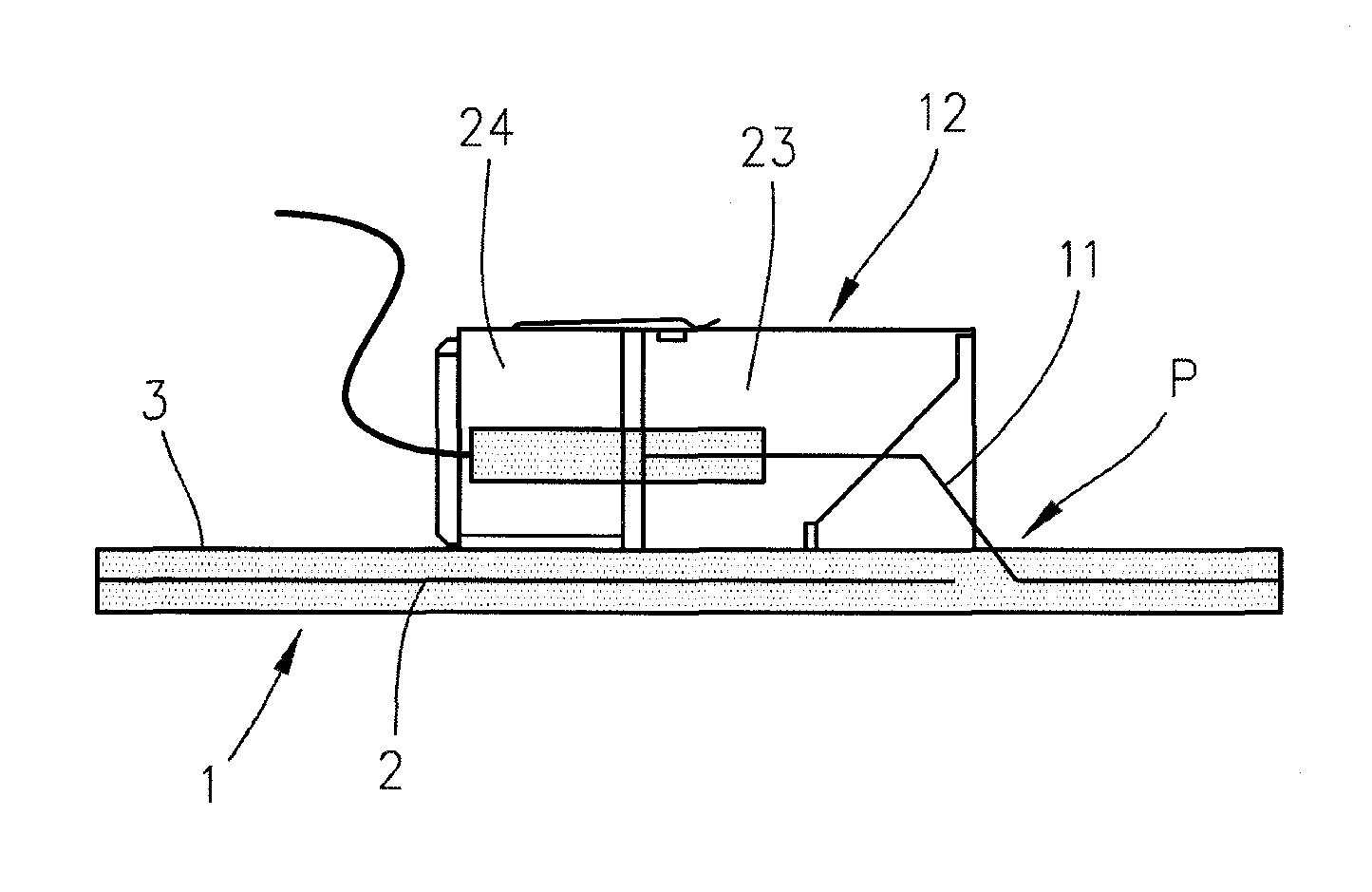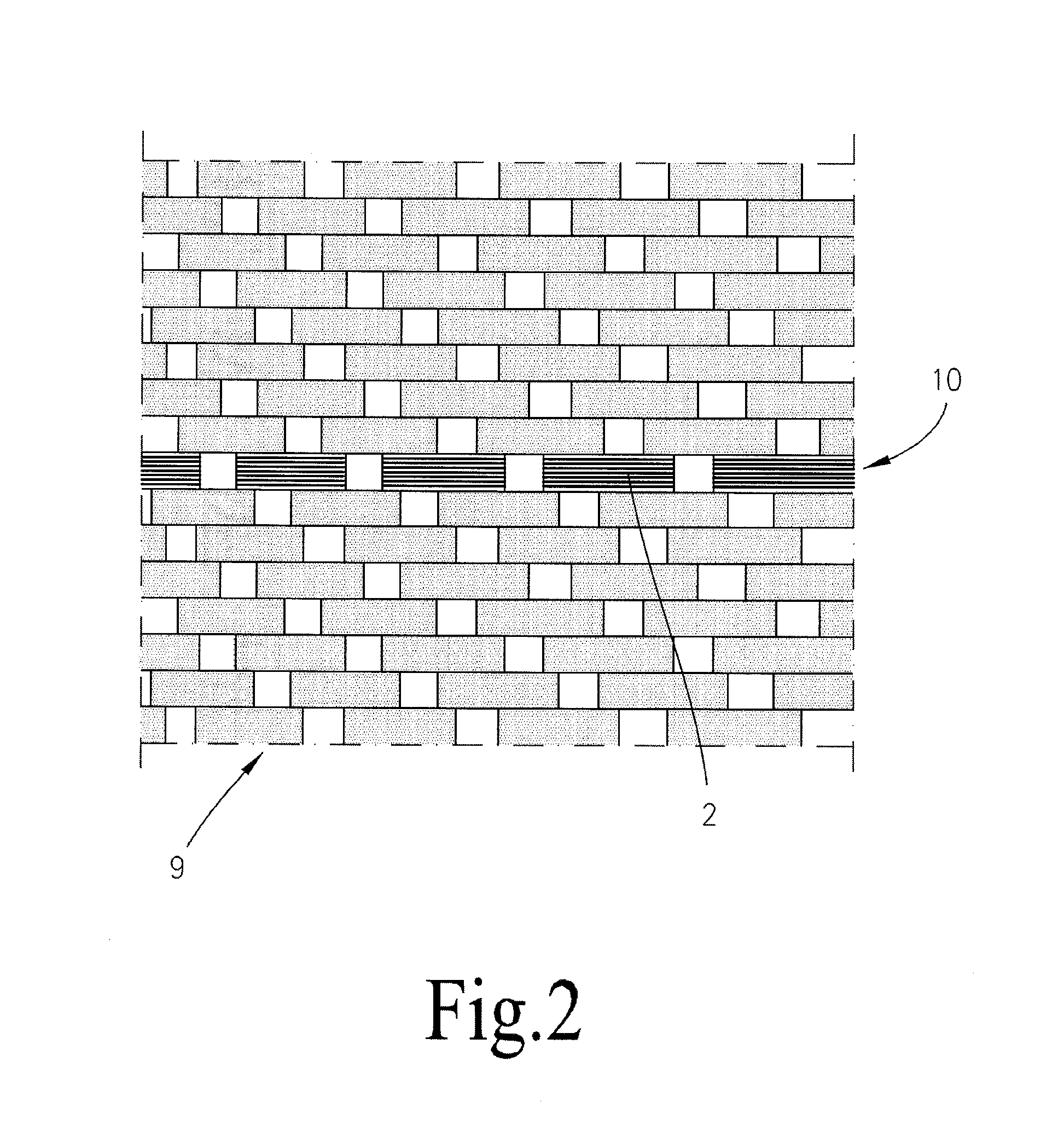Method for connecting an optical waveguide, embedded in a fibre composite component, to an external optical waveguide
a fiber composite component and optical waveguide technology, applied in the field of connecting optical waveguides, can solve the problems of difficult to realise later expansion of cable form or modular construction thereof, high cost, and high cost of cable form, and achieve the effects of increasing production reliability, precise alignment, and rapid and reliable inspection of end portions
- Summary
- Abstract
- Description
- Claims
- Application Information
AI Technical Summary
Benefits of technology
Problems solved by technology
Method used
Image
Examples
Embodiment Construction
[0033]A preferred embodiment of the present invention is described in the following, while referring simultaneously to FIGS. 1 to 9.
[0034]FIG. 1 illustrates a preferred embodiment of a fibre composite component 1 which is configured, for example, as a structural element 1 of an aircraft and spacecraft. The structural element 1 is configured, for example as a stringer 1, a former 1, a crossbar 1 or the like of the aircraft and spacecraft. The fibre composite component 1 is preferably formed from a carbon fibre-reinforced plastics material (CFRP). Alternatively or additionally, the fibre composite component 1 can be formed from glass fibres, aramid fibres and / or boron fibres or a combination of these materials. The fibre composite component 1 preferably has a large number of laminate plies or laminate layers, only laminate layers 5-8 of which having been provided with a reference numeral. There can be any number of laminate layers 5-8. A laminate layer 5-8 is configured in each case a...
PUM
 Login to View More
Login to View More Abstract
Description
Claims
Application Information
 Login to View More
Login to View More - R&D
- Intellectual Property
- Life Sciences
- Materials
- Tech Scout
- Unparalleled Data Quality
- Higher Quality Content
- 60% Fewer Hallucinations
Browse by: Latest US Patents, China's latest patents, Technical Efficacy Thesaurus, Application Domain, Technology Topic, Popular Technical Reports.
© 2025 PatSnap. All rights reserved.Legal|Privacy policy|Modern Slavery Act Transparency Statement|Sitemap|About US| Contact US: help@patsnap.com



